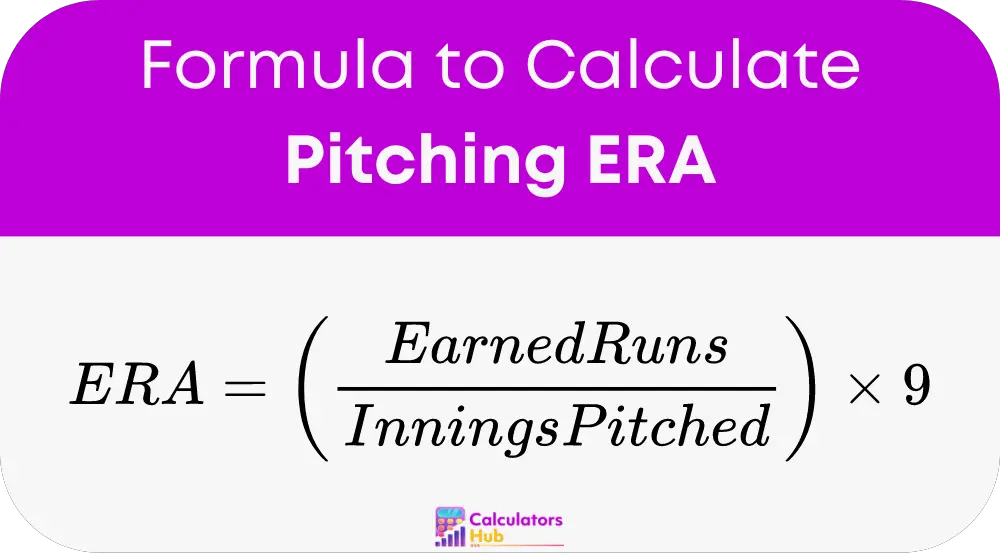The Pitching ERA Calculator simplifies the process of calculating a pitcher's Earned Run Average, a key indicator of their effectiveness. By inputting the number of earned runs allowed and the innings pitched, users can instantly obtain the ERA, providing clear insights into the pitcher's performance over a game or season.
Formula of Pitching ERA Calculator
The calculation of ERA is straightforward. The formula used is:

This formula considers:
- Earned Runs: These are the runs that scored without the aid of an error or a passed ball, directly attributable to the pitcher.
- Innings Pitched: Represents the total innings a pitcher has completed. Each inning consists of three outs, and any incomplete inning is recorded as a decimal.
Conversion Table
For those new to baseball statistics or who need a quick refresher, here’s a handy table:
| Term | Explanation |
|---|---|
| ERA | Earned Run Average, a key indicator of pitcher performance. |
| IP | Innings Pitched, total innings or fraction thereof pitched by a player. |
| ER | Earned Runs, total runs that were not influenced by errors or passed balls. |
Example of Pitching ERA Calculator
To illustrate, consider a pitcher who has pitched 7.2 innings and allowed 3 earned runs. Using our formula:
- ERA = (3 / 7.2) * 9 = 3.75
This result indicates that the pitcher allows an average of 3.75 runs per 9 innings pitched.
Most Common FAQs
A lower ERA indicates better performance, showing that the pitcher allows fewer runs on average.
ERA can vary significantly between leagues due to differences in player skill levels and ballpark factors.
While ERA is crucial, it's often used alongside other metrics like WHIP and strikeouts per nine innings to provide a fuller picture of performance.